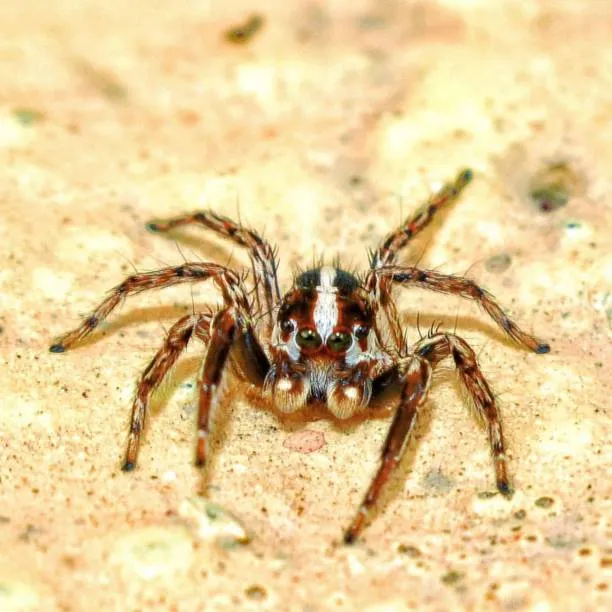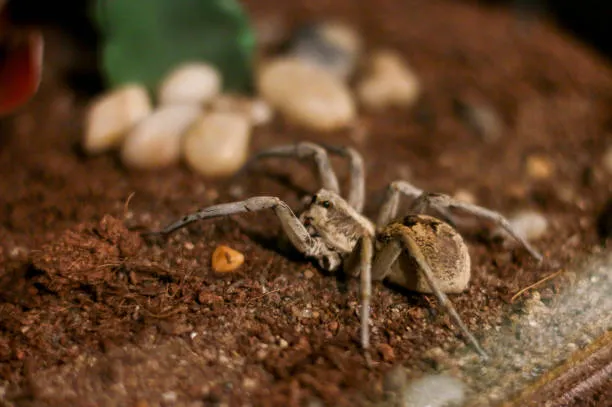Bringing home a cute tarantula can be an exciting experience for any pet enthusiast. These fascinating creatures, with their unique personalities and relatively low-maintenance care, are becoming increasingly popular. However, like any pet, tarantulas require specific care to thrive. This guide provides the top 5 essential tips to ensure your cute tarantula lives a long, healthy, and happy life. From selecting the right species to creating the perfect habitat and understanding their behavior, this article covers everything you need to know to become a successful tarantula owner. Prepare to embark on a rewarding journey into the world of these amazing arachnids, making sure your new pet gets the best care possible. Caring for a tarantula requires knowledge, patience, and a willingness to learn, but the rewards of watching these amazing creatures thrive are immeasurable.
Choosing Your Cute Tarantula
The first step in cute tarantula care is choosing the right species. Not all tarantulas are created equal, and their care requirements can vary significantly. Research is key here. Different species have different temperaments, sizes, and specific needs. Before bringing a tarantula home, understand the long-term commitment. Tarantulas can live for many years. Make sure you are prepared to care for your pet throughout its lifespan. Considering the needs of each species allows you to set up the best environment and lifestyle for your tarantula. This helps in fostering a healthy and happy pet. Take your time, compare options, and select a species that matches your experience level and lifestyle for the best chance of success.
Researching Tarantula Species
Dive deep into the world of tarantulas, and you’ll find a wide variety of species. Popular choices include the Chilean Rose Hair, known for its docile nature, and the vibrant Mexican Red Knee, which can be quite striking. Consider the size your tarantula will grow to. Some species are relatively small, while others can reach impressive sizes, necessitating larger enclosures and more space. Research the specific needs of each species, including their preferred temperature, humidity, and substrate. Learn about their dietary needs, including what types of insects they eat. Find out the typical lifespan of the species. This will help you plan for the long term. With proper research, you can choose a tarantula that fits your lifestyle and capabilities.
Understanding Tarantula Temperament

Tarantula temperaments can vary greatly. Some species are known for their calm and docile nature, while others can be more skittish or defensive. Understanding the temperament of your chosen species is vital for both your safety and the tarantula’s well-being. Some tarantulas may be prone to bolting or kicking hairs. It is important to understand the signs of stress, like a raised posture or a defensive stance. Researching the temperament of your selected species will allow you to handle your pet with appropriate care. Knowing how your tarantula is likely to react will help you provide it with the best care. This includes understanding the safe handling techniques and how to manage your expectations.
Creating the Perfect Habitat
A well-designed habitat is crucial for your cute tarantula’s health and happiness. The enclosure should mimic the tarantula’s natural environment as closely as possible, providing a safe, comfortable, and stimulating space. The right habitat reduces stress, allows them to exhibit natural behaviors, and supports their overall well-being. Consider the different aspects of a tarantula’s habitat to ensure it is suitable for your new pet. From the enclosure size to the substrate and decorations, every element plays an important part in their comfort and health. A well-designed habitat will also make it easier for you to observe your tarantula and care for its needs.
Selecting the Right Enclosure
The enclosure is the tarantula’s home. Selecting the right size is vital. The enclosure should be large enough for the tarantula to move around comfortably but not so large that it feels insecure. A general rule of thumb is to choose an enclosure that is at least twice the tarantula’s leg span in width. The height is dependent on the species. Terrestrial species do not need a very tall enclosure. Arboreal species need more height. Glass or clear plastic enclosures are ideal because they allow for easy viewing and adequate ventilation. The enclosure should have a secure lid to prevent escapes, and the ventilation should be sufficient to maintain healthy air circulation and humidity levels. Be sure that the enclosure is easy to clean and maintain for the best hygiene of your cute tarantula.
Setting Up the Substrate and Decor

The substrate is the material that covers the bottom of the enclosure. It serves as the tarantula’s ground, providing a place to burrow and feel secure. The best substrate depends on the species. Coconut fiber, peat moss, and vermiculite are popular choices. Ensure the substrate is deep enough for the tarantula to burrow if it is a burrowing species. Provide appropriate decor, such as cork bark, artificial plants, and hides. These elements give the tarantula a sense of security and help them regulate their environment. Avoid sharp objects. Make sure the decor does not have anything that can harm your pet. Arrange the decor to provide a variety of places to hide and explore, thus improving the enrichment of the enclosure.
Maintaining Temperature and Humidity
Tarantulas are ectothermic, meaning they rely on external sources to regulate their body temperature. Research the ideal temperature range for your tarantula species and maintain this range within the enclosure. You can use a heat mat or a ceramic heat emitter, but be careful not to overheat the enclosure. Humidity is another crucial factor. Different species have different humidity requirements. Use a hygrometer to monitor the humidity levels. You can adjust the humidity by misting the enclosure with water or providing a water dish. Regular monitoring and adjustments are necessary to ensure the temperature and humidity remain within the ideal range for your cute tarantula, keeping it healthy and comfortable.
Feeding Your Tarantula
Proper nutrition is essential for a cute tarantula’s health and growth. Tarantulas are carnivorous. They primarily eat insects. Knowing the right food choices, feeding frequency, and amounts will help you keep your pet happy and healthy. A well-nourished tarantula will be more active, colorful, and resilient to disease. Adjust the feeding schedule and food choices as the tarantula grows and develops. A consistent feeding routine can foster a bond with your pet. Provide a balanced diet to ensure your cute tarantula receives all the nutrients it needs to thrive and live a long, healthy life.
Choosing the Right Food

The most common food items for tarantulas are insects. Crickets, mealworms, and roaches are good choices. The size of the food should match the size of the tarantula. Avoid feeding insects that are too large, which could injure your pet. It is important to feed insects that have been gut-loaded, meaning they have been fed a nutritious diet themselves. This ensures that your tarantula receives essential vitamins and minerals. Avoid feeding wild-caught insects, as they may carry parasites or pesticides. You may supplement their diet with occasional treats, such as pre-killed pinkie mice. These can be a good source of protein, but they should only be offered sparingly.
Feeding Frequency and Amounts
The feeding frequency depends on the age and size of the tarantula. Spiderlings require more frequent feedings than adult tarantulas. As a general guideline, spiderlings can be fed two to three times per week, while adults may only need to be fed once or twice a week. Observe your tarantula’s behavior to gauge its appetite. If it consistently refuses food, it may be about to molt. Remove any uneaten insects from the enclosure within 24 hours to prevent them from stressing or harming the tarantula. Overfeeding can lead to obesity, which can shorten your pet’s lifespan. Pay attention to the tarantula’s abdomen. It should be round but not overly plump.
Watering Your Tarantula
Clean water is essential for a tarantula’s health. They need access to fresh water at all times to stay hydrated and healthy. Proper hydration supports all their bodily functions, from molting to digestion. The importance of providing the correct water setup cannot be overstated. You should change the water regularly to prevent bacteria growth. Providing the right water source guarantees your cute tarantula’s well-being. Make sure to always use the appropriate water setup for your pet, so your tarantula can stay happy and healthy.
Providing Fresh Water

The most common method for providing water is a shallow water dish. The dish should be shallow enough to prevent drowning, especially for smaller tarantulas. Use a dish that is easy to clean and made of a non-toxic material. You can use water crystals in a dish for smaller species or spiderlings. These provide a safe way to keep the tarantula hydrated without the risk of drowning. Always use fresh, clean water, and change the water every day or two. This will prevent the growth of bacteria and keep the water fresh. Ensure that the water dish is in a stable location to prevent it from tipping over.
Monitoring Water Levels
Regularly check the water levels in your tarantula’s enclosure to ensure it always has access to water. If you are using a water dish, monitor the water level and refill it as needed. In drier climates, you may need to mist the enclosure periodically to increase humidity. In these situations, the tarantula will drink the droplets. Be careful not to over-mist, which can lead to mold and mildew growth. You can also use a water bottle with a dripper. Always keep the water source clean and free of debris to ensure that your cute tarantula stays hydrated and healthy.
Handling Your Cute Tarantula
While handling a cute tarantula can be tempting, it is important to prioritize your pet’s safety and well-being. Handling should be kept to a minimum. Only handle your tarantula when necessary. Some species are more docile than others, but all tarantulas can be easily startled. The correct handling techniques are essential. Understanding your tarantula’s behavior and being aware of potential risks will help you handle your pet safely. This will reduce the stress on your tarantula. You can still develop a strong bond with your tarantula by respecting its needs and providing a comfortable environment.
Understanding Tarantula Behavior

Tarantulas have unique behaviors, and understanding these behaviors is key to safe handling. Learn to recognize the signs of stress or defensiveness. A tarantula may raise its front legs, flick hairs, or even rear back as a sign it feels threatened. Be aware of these cues and respect your tarantula’s space. Always move slowly and calmly around your pet. Avoid sudden movements or loud noises, which can startle the tarantula. By being attentive to their behavior, you can handle them in the safest manner possible. Observe your tarantula’s behavior patterns, and you can learn a lot about your pet.
Safe Handling Techniques
If you must handle your tarantula, do so with extreme care. Wash your hands thoroughly before and after handling. Always handle the tarantula close to the ground or over a soft surface. This reduces the risk of injury if it falls. Do not handle your tarantula if it is stressed, about to molt, or recently eaten. If a tarantula starts to bolt or show signs of aggression, gently place it back in its enclosure. Never try to force it. Handle the tarantula gently. Be sure to support the tarantula’s entire body to prevent injury. With these precautions, you can minimize the risk of harm. Make sure to remain calm, and avoid any sudden movements.
Caring for a cute tarantula is a rewarding experience. By following these top 5 tips - choosing the right species, creating the perfect habitat, feeding your tarantula properly, providing fresh water, and handling with care - you can ensure your pet lives a long, healthy, and happy life. Remember that each tarantula is unique. Observe your pet’s behavior. Adjust your care routine to meet its individual needs. With patience, research, and dedication, you can build a strong bond with your tarantula. Enjoy the fascinating journey of tarantula ownership and the many years of enjoyment you will share. Your cute tarantula will surely bring you much joy.
